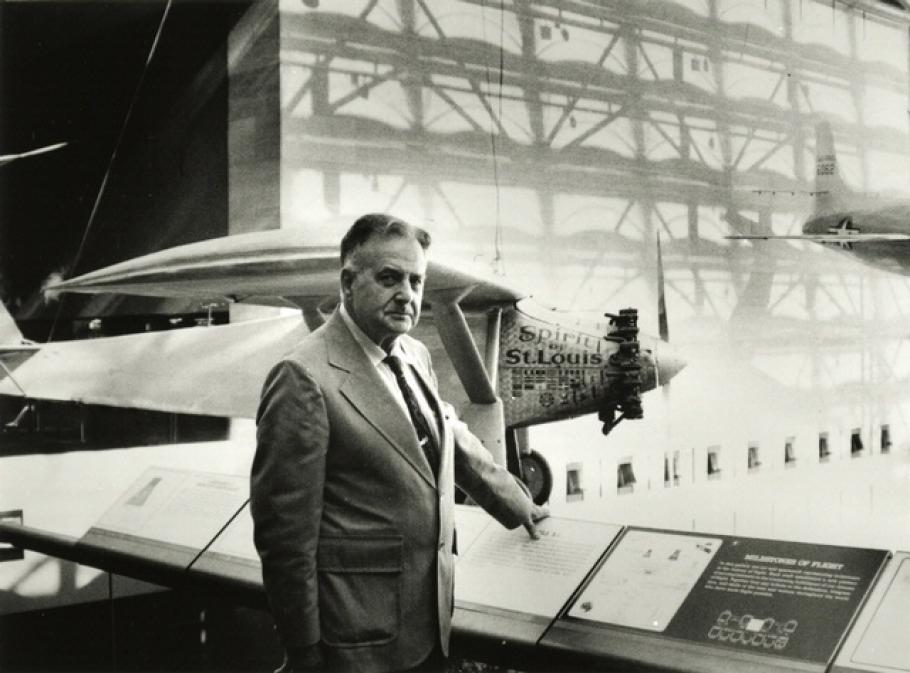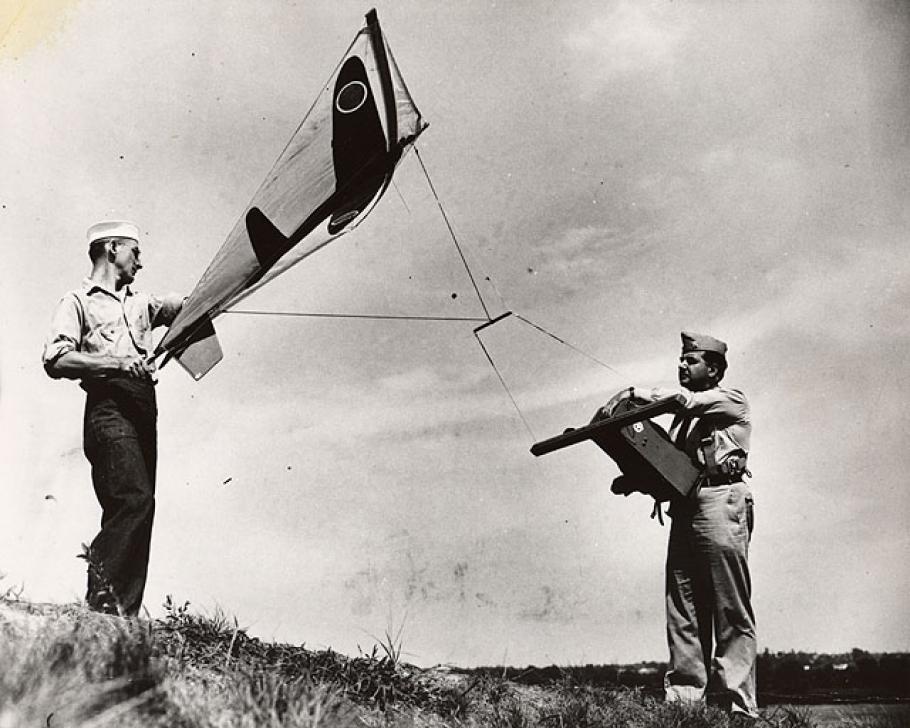Paul Garber (1899-1992) is a legend around the National Air and Space Museum, and rightly so. An aviation enthusiast and skillful kite- and model-maker since childhood who once watched Orville Wright fly overhead, he started working at the Smithsonian in 1920, building models and preparing aviation-themed exhibitions. For the next 72 years he dedicated himself to preserving the nation's aeronautical heritage and sharing it with the public. He was responsible for almost single-handedly acquiring the largest and most remarkable collection of historic aircraft in the world. And it was Garber who had the foresight to persuade the Secretary of the Smithsonian to send a cable to Charles Lindbergh in Paris after his momentous 1927 flight to ask if he would donate the Spirit of St. Louis to the Museum. Lindbergh said yes, and the Smithsonian acquired one of its most treasured artifacts.
Photograph is featured in National Air and Space Museum: An Autobiography
Garber’s kite- and model-making talents helped contribute to the World War II effort. By 1940, Garber had assembled an exhibit of the different types of Allied and enemy aircraft in the news at that time. The display of scale models, photographs, and drawings caught the attention of the U.S. Navy, who asked Garber to bring it to the Navy Department and teach military personnel how to recognize these aircraft. Soon thereafter, he found himself a lieutenant in the Naval Reserve, assigned to the Special Devices Airplane Recognition program. But Garber’s most significant contribution arose from his love of kites. When he learned about the need for effective practice gunnery targets at sea, he and his friend Stanley Potter came up with an unusual solution — large, highly maneuverable kites. Garber gave a skillful demonstration of the prototype to U.S. Navy Capt. Luis de Florez, effortlessly maneuvering it to spell out de Florez’s name, who was enormously impressed.
Six kites were immediately ordered, followed by 100, then 1,000. They proved so effective that by the end of the war some 300,000 target kites had been built. The kites could loop, dive, climb, and make figure-eights, all manually controlled by a reel and harness worn at the waist. The outline of an enemy aircraft was emblazoned the front.
Garber’s kites are credited with saving an American carrier from enemy attack. During a kite target training exercise, two Japanese torpedo bombers came out of nowhere toward the ship, and because gunnery trainees were in position and ready, they quickly downed the enemy planes. As Garber put it, “The kite shooters swung their guns around and shot those rascals into the water.” The National Air and Space Museum maintains a nearly complete collection of Garber target kites in all variations by all manufacturers. They are currently in storage. Other owners of these vintage WWII kites periodically place them for sale on eBay. They can also be seen in museums around the world, such as the Kite Museum in Tokyo, Japan. In his later years, Paul Garber founded the Smithsonian Kite Festival, the annual kite-flying celebration held for decades on the National Mall in Washington, DC. The Museum’s facility in Suitland, Maryland was named the Paul E. Garber Preservation, Restoration, and Storage Facility in recognition of Garber’s long, distinguished service to the Museum and the instrumental role he played in building the storage site. There is a Museum endowment named for him as well. He died in his sleep on September 23, 1992, at the age of 93. Garber's final resting place is in Arlington National Cemetery.

